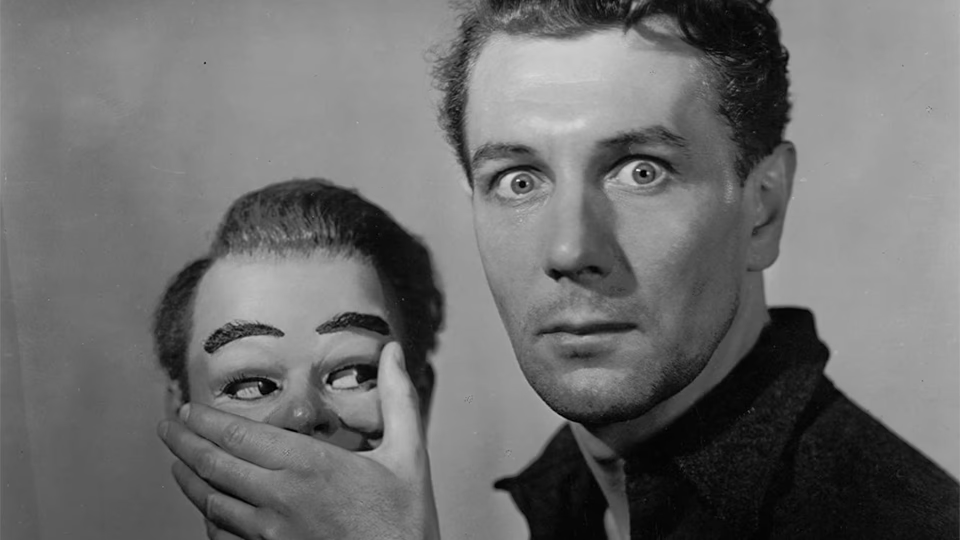Dead of Night

Dead of Night opens with an architect arriving at an isolated country cottage for some consulting work. Upon entering, he’s confronted with an overwhelming sense of déjà vu. Though he’s never met them, he recognizes the guests from a reoccurring dream. One guest, a psychiatrist, proves skeptical, prompting the others to share own tales of the unexplained.
In the first tale, a convalescing race car driver receives a haunting premonition. Fine, but forgettable.
The second story involves a teen girl who relates encountering a weeping young boy at a Christmas party. She comforts the boy, tucks him into bed, then returns to the party where she learns the boy’s sister had murdered him years prior. Underwhelming.
The third, and best, story opens with a woman gifting her fiancé a mirror for his birthday. After hanging it in the bedroom, he spies something odd in the reflection, but dismisses it. Later that evening, he’s standing before the mirror tying his bowtie when the background shifts to a dark, ornate Victorian room with a roaring fireplace. Disbelieving, he whirls around only to see his usual drab bedroom. He turns back to the mirror and again sees the Victorian room. He forces his eyes closed. When he opens them again, the background is normal. This modest special effect surprised me with its impact. As time goes on, the woman notices her fiancé growing more agitated. He confesses his growing fear of the mirror, but she doesn’t believe him. But upon learning the mirror’s origin, she suspects the impossible. Understated but effective, despite the score’s overbearing horn swells.
On the opposite end of the spectrum, the next story proves the weakest. It concerns a pair of golfers who make a wager, leading one to one commit suicide by drowning and haunt the survivor. It can’t decide if it wants to be a black comedy or genuine horror and thus, succeeds at neither. This, despite Basil Radford and Naunton Wayne playing the same charming characters they originated in Alfred Hitchcock’s The Lady Vanishes.
The last story sees Michael Redgrave as a ventriloquist accused of murder. Told in flashbacks, we see what lead to his arrest. Redgrave convinces as a ventriloquist and his dummy, Hugo, conveys a clown-like mix of wide-eyed charm and uncanny menace. Written by John Baines, who also wrote the aforementioned haunted mirror segment, the story proves solid if familiar. Almost eighty years of subsequent supernatural dummy material has rendered its path well-trod. But at the time of its premiere, this segment likely packed the most punch.
Had the film ended here, it would have disappointed, but the framing story continues, packing a surprising twist, including a montage that ties all the prior tales together while surpassing them in terms of formal rigor and existential dread.
According to the IMDb, the USA release omits the Christmas Party and Golfing stories. I suspect this may be the rare case where a distributor’s scissors resulted in a better film. Granted, omitting these segments dilutes the finale, but the tighter runtime and more consistent tone are likely worth the trade-off.